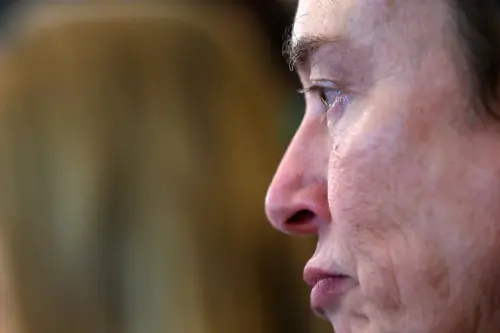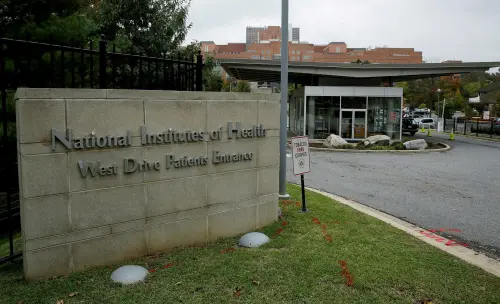Donald Trump’s war on the federal workforce began before he became president. In August 2024, he was asked about federal workers, and his response was:
“They’ve got to be held accountable [for] what they’re doing. They’re destroying this country. They’re crooked people, they’re dishonest people. They’re going to be held accountable.”
Even for a figure known for sharp rhetoric, this jarring insult was striking to the roughly two million federal employees who believed they were serving the public by implementing laws passed by democratically elected officials.
A similar strategy was emphasized again in October, when Robert Vought—an architect of Project 2025 who would become Trump’s OMB Director—was filmed by ProPublica saying:
“We want the bureaucrats to be traumatically affected. When they wake up in the morning, we want them not to want to go to work, because they are increasingly viewed as the villains. We want their funding to be shut down … We want to put them in trauma.”
Once in office, Trump tasked Elon Musk with leading efforts to reduce the size of the federal government. Musk and his team quickly echoed Trump and Vought’s sharp rhetoric, referring to agencies like the U.S. Agency for International Development (USAID) as “a criminal enterprise”—despite no evidence of criminality in the organization. Federal workers were assigned tasks many viewed as demeaning, including a directive to submit weekly memos listing five accomplishments or risk termination. The requirement sparked confusion, fear, and a fair amount of derision, although it distracted workers and quickly died a quiet death. The day after his inauguration, Trump ordered all federal workers to return to in-person work. The move was seen by many as a rebuke, suggesting that remote employees were not working. In reality, many of those workers had telework agreements under union contracts and, in some cases, no physical offices to return to.
The “trauma” strategy worked in one respect. Initially, few federal employees accepted the deferred resignation offer, which allowed them to remain on the payroll until September 2025 despite submitting notice. However, as the Department of Government Efficiency (DOGE) team began announcing reductions in force, the offer was reopened in several agencies. Some workers who had declined it the first time reconsidered, either out of concern about potential layoffs or because they no longer felt they could work under leadership that viewed them with hostility.
Chasing federal workers out of their jobs has now created another problem—namely, a shortage of personnel to carry out essential duties, including those prioritized by the Trump administration. At the Department of Agriculture, officials are now advertising for positions in critical areas where staffing gaps have emerged, such as efforts to contain avian influenza, after too many employees accepted buyout offers.
The same scenario is playing out at the Federal Aviation Administration, where a shortage of air traffic controllers is contributing to flight delays. It’s a story likely to be repeated across the federal government, potentially with dangerous consequences.
On the eve of stepping back from full-time management of DOGE, Elon Musk had to admit that the office was likely to save just a fraction—$150 billion—of the $2 trillion in savings he had promised in October 2024. That, along with the growing realization that many laid-off federal workers had been performing essential duties like safeguarding the nuclear stockpile or conducting cancer research, is an early sign that the trauma strategy was not only deeply unpopular with the public but also ineffective.
And so, recently and with little fanfare, the General Services Administration (GSA)—a small agency primarily responsible for managing federal real estate—is trying a different strategy. Departing from the punitive tactics used elsewhere in the administration, GSA launched a program called “Bonuses for Cost Cutters”—offering cash incentives to employees who propose ways to save money and help meet the spending targets set by DOGE.
Suddenly, at least one part of the Trump administration appeared to acknowledge that federal employees might not be criminals—and that they might actually understand how their agencies operate. It’s a basic truth familiar to every successful consultant and CEO who has led a meaningful turnaround. And more than 30 years ago, it was something the federal government understood, too.
The National Performance Review (NPR) was the last major presidential initiative to examine the entire federal government before DOGE. But unlike DOGE, the NPR (which I led on behalf of Vice President Al Gore) was designed to make government “work better” as well as “cost less.”
The other key difference between the NPR and the DOGE initiative is in who did the work. While DOGE brought in software engineers from outside the government, the NPR recruited civil servants to serve on teams reviewing each major agency—though not their own. As any turnaround expert knows, front-line employees often have the clearest insight into what’s not working in an organization.
To further involve government workers in the cause, Vice President Gore asked us to create something akin to Senator Proxmire’s (D-Wis.) “Golden Fleece Award” (which highlighted examples of government waste in the 1970s and 1980s) that celebrated good work. In response, he introduced the “Hammer Award,” ” a nod to the mythical, overpriced Defense Department hammer. The award featured a simple wooden frame painted gold, a cheap blue velvet background, and a hammer adorned with a red, white, and blue ribbon. It also included a handwritten note from Al Gore reading, “Thank you for creating a government that works better and costs less.”
Over the course of eight years, Vice President Al Gore recognized more than a thousand teams that had reinvented operations, increasing efficiency, saving money, and improving service to citizens.
For example, the Customs staff at Miami Airport formed partnerships with airlines to reduce drug smuggling and improve passenger processing. The Veterans Administration finance office in Austin cut processing costs for small purchases, eliminating the need to process over one million pieces of paper annually, and earned a $4.4 million rebate by switching to VISA cards. Meanwhile, the federal government council in Atlanta created a uniform application for federal benefits, reducing redundancy and saving staff time.
Some Hammer awards were presented by Vice President Gore himself, including the 1000th award, which went to the Postal Service and a partnering group that developed a more efficient system for handling change-of-address requests. Others were awarded by senior members of the team or political appointees.
It may be too late in the game for the Trump administration to abandon its strategy of insults and intimidation in favor of one that enlists federal workers as partners in streamlining and reorganizing government. Many employees no longer trust the administration or its appointees, and they may doubt how their input would be used—or misused. Still, for Trump officials seeking to meet the president’s goals, a new approach could offer a more effective path to identifying wasteful practices.
The Brookings Institution is committed to quality, independence, and impact.
We are supported by a diverse array of funders. In line with our values and policies, each Brookings publication represents the sole views of its author(s).






Commentary
Is it too late for the Trump administration to try something new with the federal workforce?
May 14, 2025